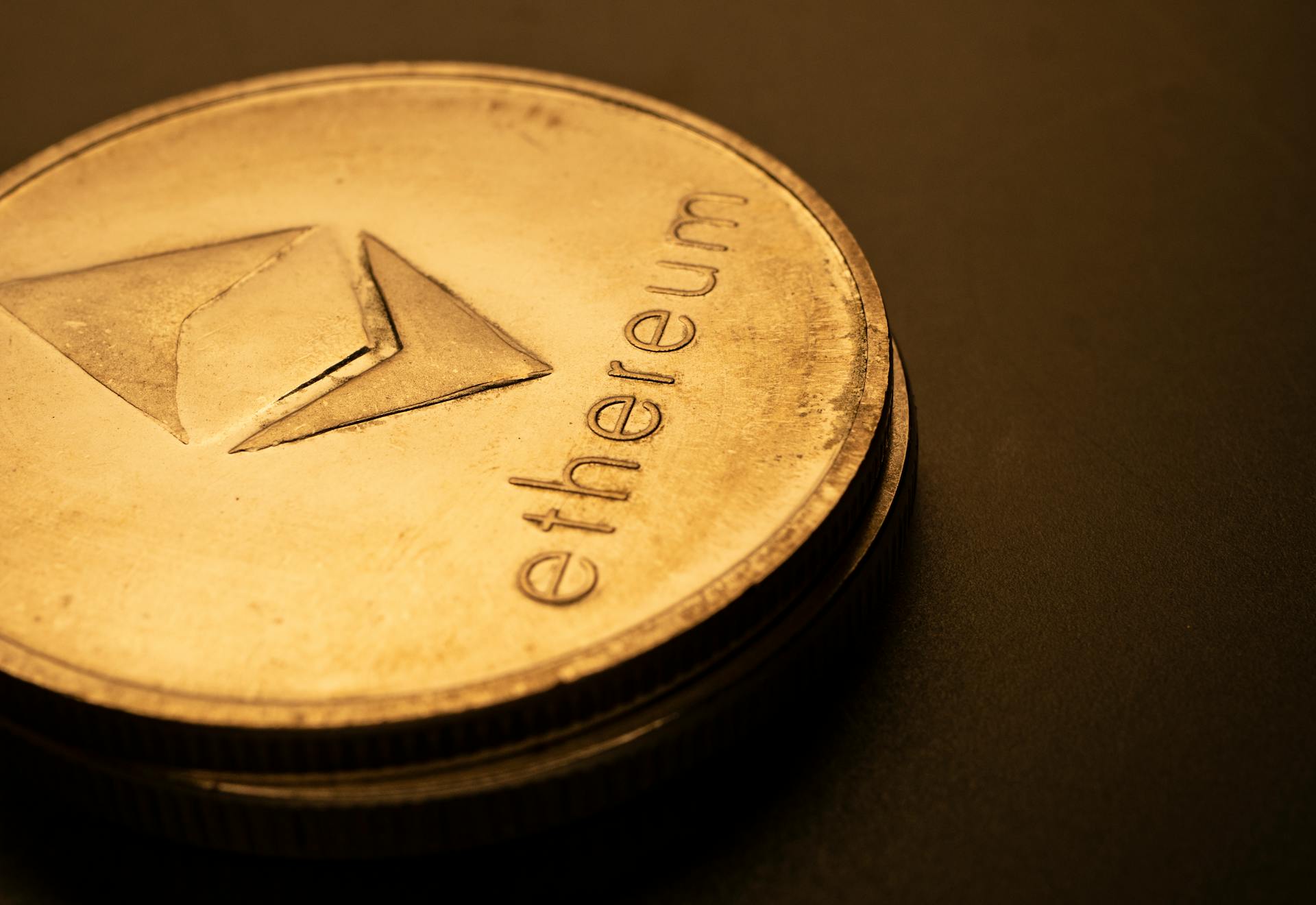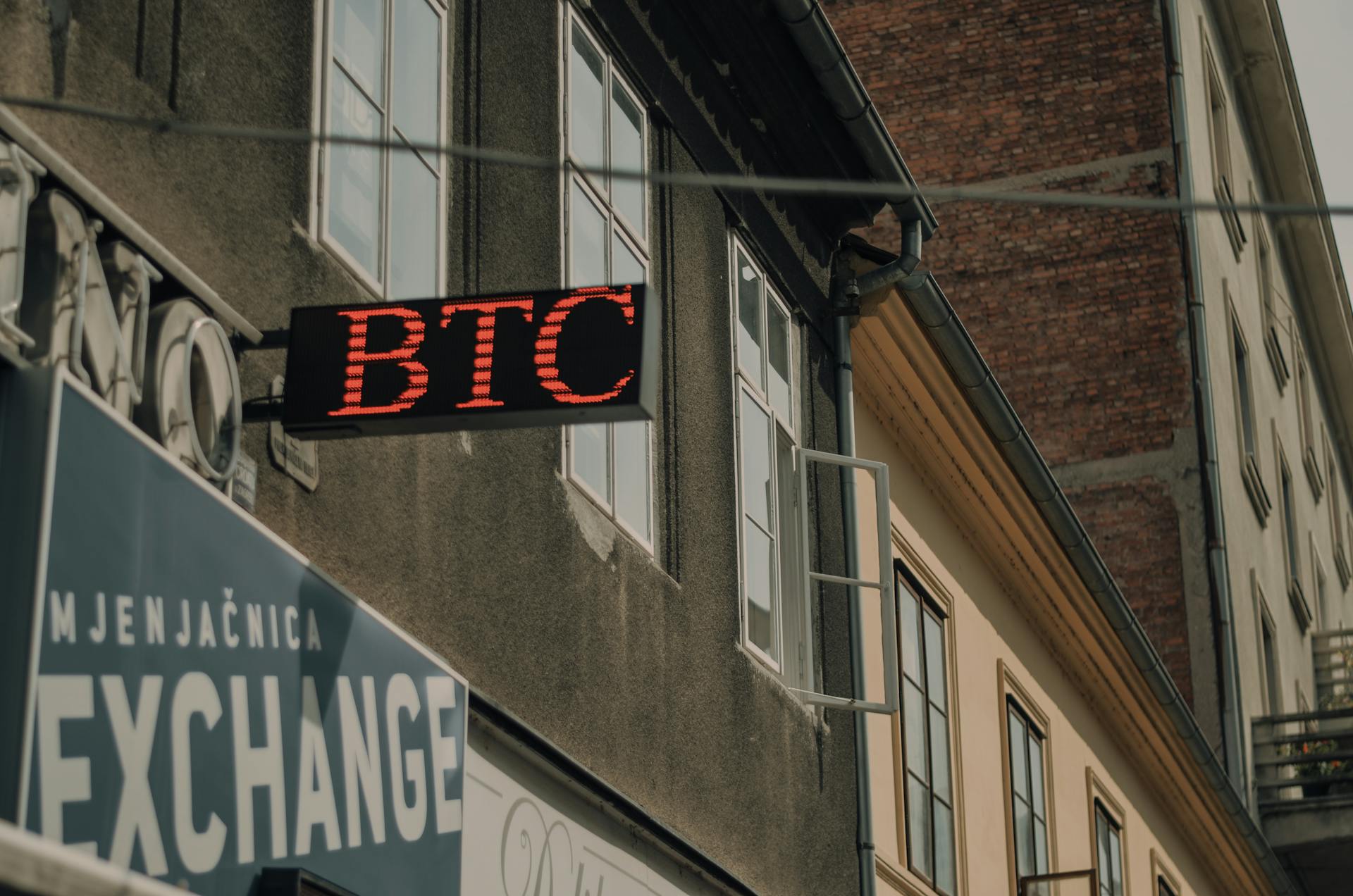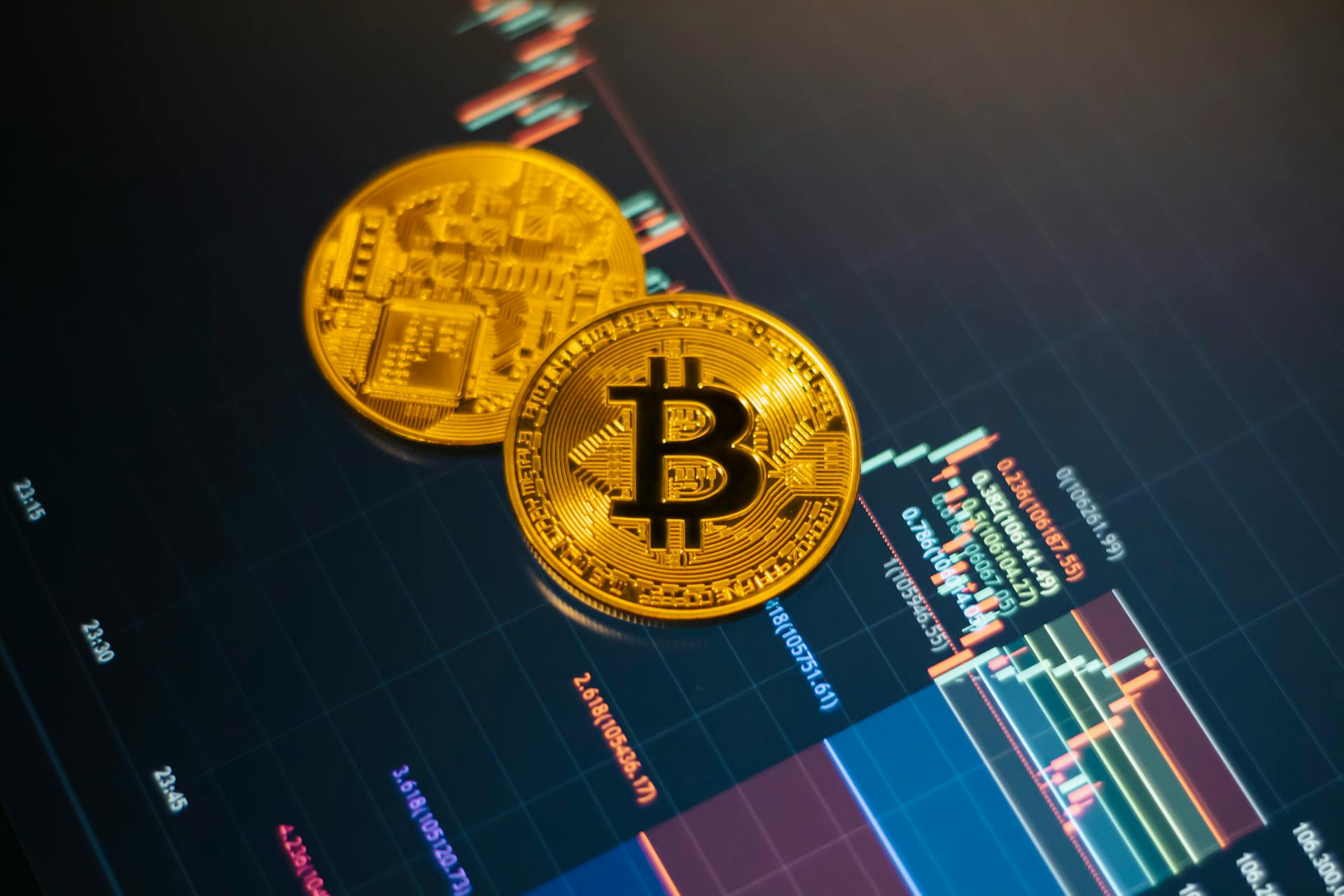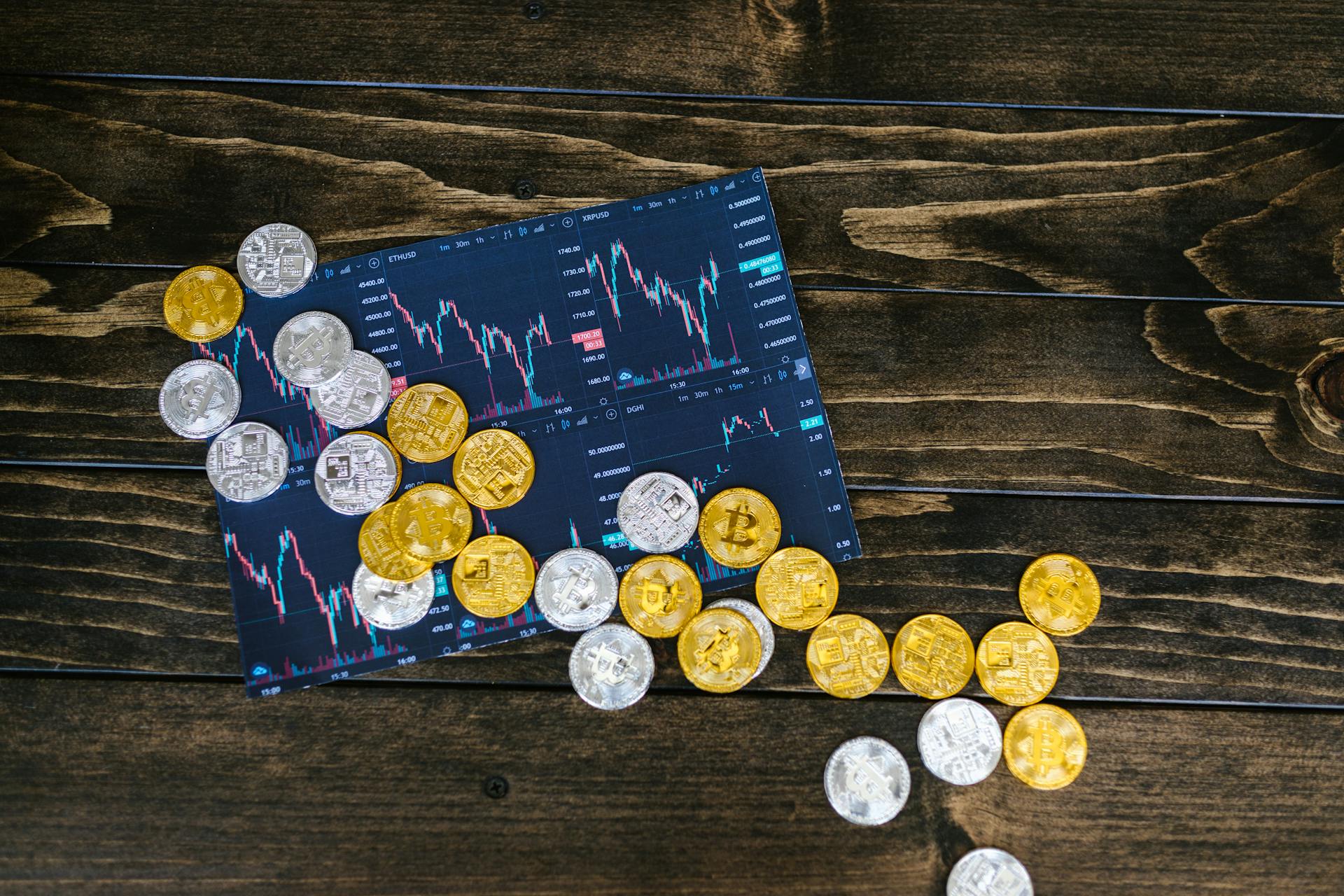
Uniswap is a decentralized exchange (DEX) that allows users to trade cryptocurrencies in a trustless and permissionless manner. It was founded in 2018 by Hayden Adams.
Uniswap's liquidity is provided by liquidity pools, which are essentially large amounts of cryptocurrency that are locked into smart contracts to facilitate trading. These liquidity pools are created by users who provide liquidity to the platform in exchange for a fee.
Uniswap's token, UNI, was introduced in 2020 and is now one of the top 20 cryptocurrencies by market capitalization. It was airdropped to all users who interacted with the platform during a certain period.
Uniswap's decentralized nature means that it operates without the need for a central authority or intermediaries, making it a popular choice for users who value transparency and autonomy.
What is Uniswap?
Uniswap is a decentralized finance protocol used to exchange cryptocurrencies and tokens on blockchain networks that run open-source software.
This is in contrast to traditional cryptocurrency exchanges that are run by centralized companies, giving Uniswap a unique edge in terms of transparency and control.
Uniswap's protocol is governed by the owners of its native cryptocurrency and governance token called UNI, who vote on changes to the protocol and implement them through a team of developers.
The UNI token is not needed to trade on the exchange, but it does play a crucial role in the governance of the protocol.
Tokens were initially distributed to early users of the protocol, which was a key factor in its initial success.
How it Works
Uniswap uses blockchain-based smart contracts to facilitate decentralized trading of digital assets. These smart contracts are run on the Ethereum blockchain and allow for advanced transactions beyond simple cryptocurrency transfers.
To participate in the Uniswap network, you need to connect a compatible digital wallet. This wallet will be used to store and manage your digital assets. The Ethereum platform collects fees for processing Uniswap transactions, so you'll need ether (ETH) to pay any transaction fees you incur.
Explore further: Uniswap Wallet
Uniswap employs liquidity pools to facilitate trades between different pairs of digital assets. These pools are user-generated and consist of cryptocurrencies or tokens locked in a smart contract. The liquidity pool's ratio of tokens, combined with the constant product formula, determines the price of a token.
Here's a breakdown of the Uniswap Protocol's constant product formula:
The Uniswap Protocol uses this formula to determine the price of each token in the pool based on the ratio of the two token balances. The price of a token is simply the ratio of the two token balances.
History
Uniswap was one of the first decentralized exchanges (DEX) to launch on Ethereum, quickly becoming the biggest DEX in crypto.
It eclipsed all others in terms of daily trading volume, which is impressive considering the rapid growth of the crypto market.
A DEX is a decentralized solution to a centralized exchange like Binance or Coinbase, where buyers and sellers submit orders with the prices they wish to trade at.

The automated market maker (AMM) was implemented to avoid the centralized approach, injecting liquidity into the exchange by offering to both buy and sell a particular asset at a similar price.
As of the end of 2022, UNI, the governance token of Uniswap, is the 20th biggest cryptocurrency by market capitalization, with a total value of approximately $4.4 billion.
The ERC20 scripting standard, used within the Ethereum blockchain, dictates rules and actions that an Ethereum token or smart contract must follow to be implemented.
This technical standard is crucial for the functioning of Uniswap, allowing users to exchange cryptocurrencies directly.
Protocol
The Uniswap Protocol is a decentralized marketplace that allows users to swap cryptocurrencies on the Ethereum blockchain. It's a set of persistent, non-upgradable smart contracts that can't be changed or modified.
Uniswap uses an automated market maker (AMM) system, which removes the need for centralized middlemen and allows for efficient trading. The AMM system uses a mathematical algorithm to determine the price of an asset based on the supply of the asset.

The Uniswap Protocol relies on liquidity pools to facilitate trades. Liquidity pools are user-generated pools of cryptocurrencies or tokens locked in a smart contract, used to help trades between assets on a decentralized exchange.
Here are the different versions of the Uniswap Protocol:
- Uniswap v1 was the first version, launched in November 2018, which allowed users to swap tokens against ETH.
- Uniswap v2, launched in May 2020, increased the protocol's flexibility and allowed users to trade any Ethereum-based token for any other token.
- Uniswap v3, released in May 2021, introduced concentrated liquidity, allowing liquidity providers to choose specific price ranges.
- Uniswap v4 is currently being built in public, aiming to make liquidity pools more customizable and lower gas costs.
The Uniswap Protocol is open-sourced, meaning the code is publicly viewable, and anyone can deploy the contracts on any blockchain. It's already available on several blockchains, including Ethereum mainnet, Base, Polygon, and more.
V1
Uniswap's journey began with the creation of a proof-of-concept Automated Market Maker (AMM) in October and November of 2017.
The first version of Uniswap, Uniswap V1, was created by Adams, who designed a website and a smart contract to make it happen.
A smart contract is a program that allows blockchain to run more advanced transactions than simply sending cryptocurrency from one person to another.
After passing all the required technical tests, Uniswap V1 was made available to the public.
V2

Uniswap V2 was a significant upgrade to the original protocol, adding features like the ability to swap ERC-20 tokens for other ERC-20 tokens, flash swaps, and a new price oracle system.
This upgrade gave users a far better experience and allowed for more efficient transactions. The ability to swap different tokens was a massive upgrade.
Flash swaps are a feature that allows you to borrow some quantity of token x without having to put down any collateral. This is mostly used for taking advantage of sudden arbitrage opportunities.
The price oracle system in Uniswap V2 uses a time-weighted average price (TWAP) to improve decentralization and reduce the risk of price manipulations affecting flash swap contracts.
Uniswap V2 introduced ERC20 token/ERC20 token pools, allowing any ERC20 token to be pooled directly with any other ERC20 token. This change made it advantageous for liquidity providers who can keep a wider variety of ERC20 token equivalent holdings without being forced to own ETH.
The protocol's liquidity providers were compensated with additional UNI tokens, and a total of 1 billion UNI tokens were distributed.
Labs

Uniswap Labs is the company behind the Uniswap Protocol, a peer-to-peer system for swapping digital assets. It was founded in 2018 by Hayden Adams.
The Uniswap Protocol has facilitated over $2.4 trillion in trading volume, making it a significant player in the DeFi space. Uniswap Labs has also raised $165 million in 2022, after initially aiming to raise between $100 and $200 million.
Uniswap offers a range of products, including a self-custodial mobile wallet and a Trading API for professional users. These tools provide access to liquidity across multiple blockchains, including Ethereum, Polygon, and Optimism.
In 2024, Uniswap Labs introduced the largest bug bounty program in blockchain history, with rewards up to $15.5 million. This move highlights the company's commitment to security and community engagement.
The Gas Fee
The Gas Fee is a network charge that applies to all transactions on Uniswap, including failed ones. You won't get your money back for these fees, as miners still have to use their tools to figure out that your transaction didn't go through.
Ethereum's blockchain pays miners in ether (ETH), but on the Polygon network, network fees are paid in MATIC.
Uniswap doesn't receive payment from network fees, according to their official website.
PancakeSwap
PancakeSwap is a decentralized exchange that operates on the Binance Smart Chain.
It uses the CAKE token to incentivize users to provide liquidity.
PancakeSwap enables the exchange of Binance-compatible tokens that comply with Binance's BEP-20 technical standard.
These tokens are different from the Ethereum-compatible tokens that Uniswap supports, which adhere to the ERC-20 standard.
PancakeSwap operates on a different blockchain platform than Uniswap, which uses the Ethereum platform.
Key Features
Uniswap's key features are what set it apart from other decentralized exchanges. One of its most notable features is Concentrated Liquidity, which allows liquidity providers to specify price ranges for their capital, optimizing their returns and offering more control.
This feature is a game-changer for liquidity providers, as it enables them to manage their risks and rewards more effectively. By specifying price ranges, providers can ensure that their capital is working efficiently and effectively.
Uniswap also introduced Multiple Fee Tiers, which allow liquidity providers to choose different levels of fees based on the expected volatility of the pair. This feature balances the risks and rewards, making it a more attractive option for providers.
Here are some of the key features of Uniswap:
- Concentrated Liquidity
- Multiple Fee Tiers
- Customizable Pools
- Non-Fungible Liquidity
- Flexible Fees
- Advanced Oracles
The UNI Token
The UNI token is the governance token of the Uniswap protocol, introduced in September 2020. It allows holders to participate in the platform's decentralized governance.
UNI was distributed through an airdrop to early users of the platform and allocated to various stakeholders, including the development team, investors, and a community treasury. This airdrop was valued at around $1,400 and sent to over 250,000 Ethereum addresses.
The token operates on the Ethereum blockchain following the ERC-20 standard, ensuring compatibility with a wide range of decentralized applications. Its total supply is capped, with a scheduled release over several years to support ongoing development and ecosystem growth.
Here are some categories where UNI is used:
- Decentralized cryptocurrency exchanges
- Ethereum-based protocols
- Ethereum tokens
- Decentralized autonomous organizations
Holders of UNI can use it to vote on decisions related to the protocol, including protocol upgrades, changes to fee structures, and other governance-related matters. This allows stakeholders to have a say in the future of the Uniswap platform.
Benefits and Drawbacks
Uniswap offers several benefits, including enabling the decentralized exchange of many digital assets and allowing users to earn UNI by staking their cryptocurrency holdings. This is a unique opportunity for users to earn rewards while participating in the platform.
One of the most attractive features of Uniswap is its decentralized governance, which enables anyone to participate. This level of community involvement is a major advantage of the platform.
However, there are also some drawbacks to using Uniswap. For example, it only supports the exchange of Ethereum-compatible cryptocurrencies, which may limit its use for users with other types of digital assets.
Here are some key benefits and drawbacks of Uniswap at a glance:
- Enables decentralized exchange of many digital assets
- Users can earn UNI by staking cryptocurrency holdings
- Decentralized governance allows anyone to participate
- Only supports Ethereum-compatible cryptocurrencies
- Users must own ETH to pay transaction processing fees
- Requires a compatible, self-hosted wallet
Advantages and Disadvantages
The Uniswap Protocol offers several benefits that make it an attractive option for traders. One of the key advantages is decentralization, which means that no single entity controls the exchange, giving users complete control over their assets.
Decentralization has two main advantages: the smart contracts that make the Uniswap Protocol cannot be changed once deployed, and funds are completely self-custodial, meaning no third party can take or misuse them. This level of security is unparalleled in traditional centralized exchanges.
Improved liquidity is another benefit of the Uniswap Protocol, allowing for cheaper swaps by tapping into liquidity from retail users without relying on traditional market makers or order books.
The Uniswap Protocol also offers greater accessibility, enabling anyone to trade any token or create a market for any token, making it more accessible to a wider range of users.
Here are some key advantages of the Uniswap Protocol:
- Decentralized exchange of many digital assets
- Smart contracts enable more secure asset trading
- Users can earn UNI by agreeing to stake their cryptocurrency holdings
- Decentralized governance of the Uniswap platform enables anyone to participate
However, there are also some disadvantages to consider. For example, Uniswap only supports the exchange of Ethereum-compatible cryptocurrencies, which may limit its usability for some users.
Does Charge Fees?
Uniswap charges a flat fee of 0.25% to fund its operations.
This fee is used to sustainably fund the operations of Uniswap Labs.
You can learn more about this fee on the Uniswap website.
Making Money
You can make money on Uniswap by buying and selling crypto-assets, requiring traders to have good timing and insight for successful transactions.

A second way to profit is to become a liquidity provider, which involves putting an equal value of two tokens into a liquidity pool and receiving a liquidity provider fee.
The liquidity provider fee is usually 0.3%, but can go as high as 1% for less frequently traded pairs.
You'll receive a liquidity pool token in return, which is also an ERC20 token, and its value increases with higher transaction fees in the pool.
Decentralized exchanges like Uniswap generate revenue through trading fees, with a portion going to liquidity providers to maintain the ecosystem.
The Bottom Line
Uniswap is a decentralized trading protocol and automated market maker with a web interface. It facilitates cryptocurrency liquidity and trading, making it one of the most popular decentralized protocols.
Its web interface allows for easy trading, which is a significant advantage for users.
Using Uniswap
To start using Uniswap, you'll need to connect your wallet to the platform. You can choose from a range of wallets, including the Uniswap Wallet, Metamask, Coinbase Wallet, and WalletConnect.
Once you've connected your wallet, you can choose which network to swap, like Ethereum, Polygon, Arbitrum, Optimism, or others. This flexibility allows you to trade on different networks with ease.
With your wallet connected and network chosen, you're ready to start trading on Uniswap.
Connect Wallet
To start using Uniswap, you'll need to connect your wallet to the platform. This is a crucial step that sets the stage for your trading experience.
Uniswap supports a range of wallets, including the Uniswap Wallet, Metamask, Coinbase Wallet, and WalletConnect. These options provide flexibility and convenience for users.
Once you've connected your wallet, you can choose which network to swap, like Ethereum, Polygon, Arbitrum, Optimism, or others. This gives you the freedom to trade on different blockchain networks.
Wait for Transaction Processing
Now that you've confirmed your trade on Uniswap, it's time to wait for the transaction to be processed.
Swaps are often completed within seconds, but it can take longer if the Ethereum network is busy. I've seen it take anywhere from a few seconds to a minute or two, but it's always worth the wait.
The Ethereum network is working hard to process your transaction, so be patient and let it do its thing. You can check the status of your transaction to see if it's been processed yet.
Swaps can take longer to process if the network is busy, so don't worry if it takes a little longer than expected. Just remember that it's all part of the process.
US Usage
If you're in the US, you're in luck - Uniswap is a decentralized liquidity and exchange platform that is legal in the U.S. This means you can use Uniswap without worrying about any legal issues.
One of the most significant advantages of using Uniswap in the US is that it provides a secure and reliable way to trade cryptocurrencies.
Featured Images: pexels.com
